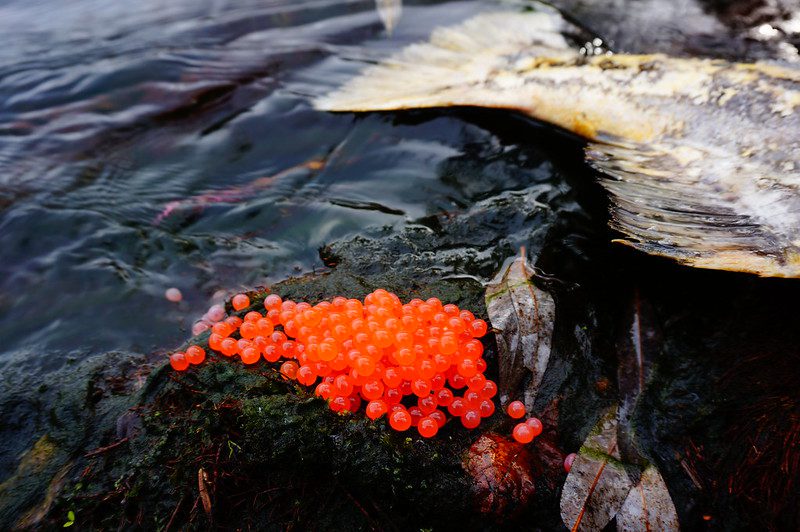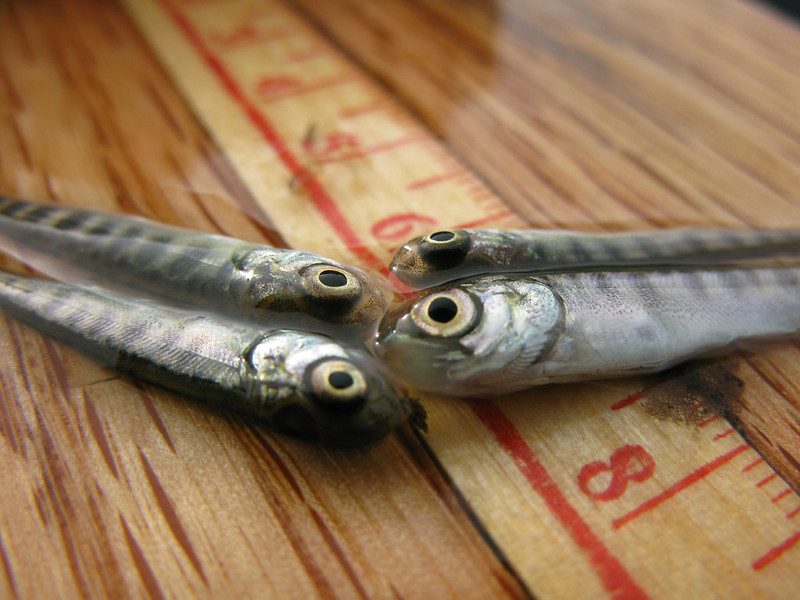Monday March 6, 2023

Thiamine (vitamin B1) deficiency complex (TDC) has become a widespread affliction in fisheries around the world. During the 2022 annual meeting of the American Fisheries Society, a special symposium on TDC included presentations from researchers describing findings addressing the root causes of thiamine deficiency. TDC is not isolated to California’s Chinook salmon (Oncorhynchus tshawytscha) it also occurs in lake trout (Salvelinus namaycush) in the Great Lakes, and Atlantic salmon (Salmo salar) in Europe and in the northeastern United States, among other important fisheries. However, this symposium was not the first time scientists came together to understand TDC, as Dr. Dale Honeyfield – professor emeritus at the U.S. Geological Survey (USGS) – spoke about meetings sponsored by the Great Lakes Fishery Commission during the mid-1990s. Decades of research continued to link mortality during early salmon life stages to low thiamine levels, yet important questions remained. For example, was it caused by salmon not getting enough thiamine from their food, or because their food had too much of the enzyme thiaminase that breaks down thiamine? Also, why do some prey species contain thiaminase anyway?
In the Baltic Sea, Atlantic salmon have experienced high mortality during early life stages since the 1970s, and TDC is considered the culprit. Research performed in Dr. Samuel Hylander’s lab at Linnaeus University in Sweden looked at how thiamine is transferred up the food chain. Using many small experiments, he found that thiamine added to the water was quickly taken up by single-celled algae, but the small critters that eat the algae (called zooplankton) did not show higher levels of thiamine. However, adding thiamine did cause some zooplankton species to increase in numbers.
In the Great Lakes region, thiamine deficiency challenges efforts to restore lake trout and Atlantic salmon populations. Thomas Blowers, a graduate student at the State University of New York Brockport described the multi-agency lake trout monitoring program that has been measuring egg thiamine concentrations across the Great Lakes region since 2001. They have found that failures in natural reproduction corresponded with low thiamine in eggs. Further, eggs had low concentrations when there were high numbers of non-native alewife (Alosa pseudoharengus) in a lake. Because alewife contain high levels of thiaminase, mothers who fed primarily on alewife were not able to provide the proper amount of thiamine to their eggs. Matthew Futia, a graduate student presently at the University of Vermont, described studies from different lakes that showed the importance of diet diversity in countering the effects of thiamine deficiency. When Atlantic salmon or lake trout fed on more species than alewife alone, this tended to result in higher egg thiamine levels.

Presenting her dissertation research from Purdue University, Dr. Avril Harder looked at the genetic adaptations of Atlantic salmon to thiamine deficiency. Specifically, her work identified a gene associated with higher survival in fish experiencing thiamine deficiency. This work will help identify and track adaptive changes in hatchery broodstock and their offspring. Christian Therrien, a graduate student at the University of Waterloo, experimented with two strains of lake trout that will be stocked into Lake Ontario. By feeding fish diets high in thiaminase or a control diet, he was able to look at how fish from these two strains differed in survival, growth, and swim speed. Even though fish from both strains had reduced growth and swim speed when fed thiaminase, one strain, from Lake Superior, had higher survival than the other strain and may be more resilient to thiamine deficiency.
Dr. Freya Rowland with USGS Columbia Environmental Research Center (CERC) presented study results focused on why some fish have thiaminase but others do not. Current research suggests that some fish acquire thiaminase by consuming thiaminase-rich prey, while others produce the enzyme through genes that encourage thiaminase production. Dr. Rowland found that fish species were more likely to contain thiaminase if they are at the bottom of the food chain and if they produce high amounts of polyunsaturated fatty acids. Freshwater tropical fish are also more likely to have thiaminase. Dr. Catherine Richter, also with CERC, has found that zebrafish (Danio rerio) and alewife have genes that, if turned on, can create thiaminase. However, the benefit these fish get from having this gene is still a mystery.
Scientists are now confident that a shift in adult fish diets to prey species with high thiaminase levels is a major factor contributing to TDC in eggs and fry. Although there is limited knowledge as to why this shift has occurred, some have identified links between ecological stressors (e.g., climate change, altered nutrient cycles, and introduction of invasive species) and food web shifts providing a potential explanation for this phenomenon. However, an explanation of why food availability in multiple ecosystems has shifted to thiaminase-rich prey remains unclear.
This post was featured in our weekly e-newsletter, the Fish Report. You can subscribe to the Fish Report here.
